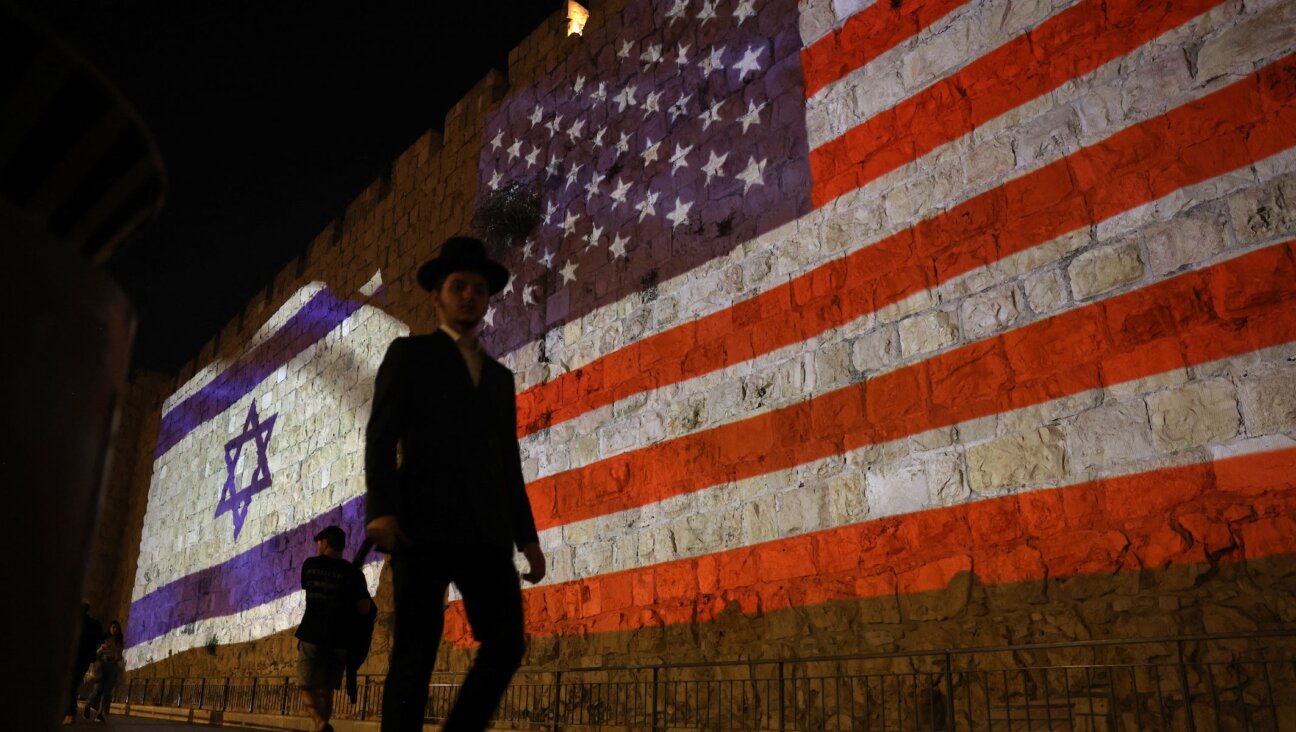In Dachau, Bavaria and Berlin, a Jewish prayer and declaration resonate
Traveling through Germany, a young Jew witnesses close up what she had only known from afar
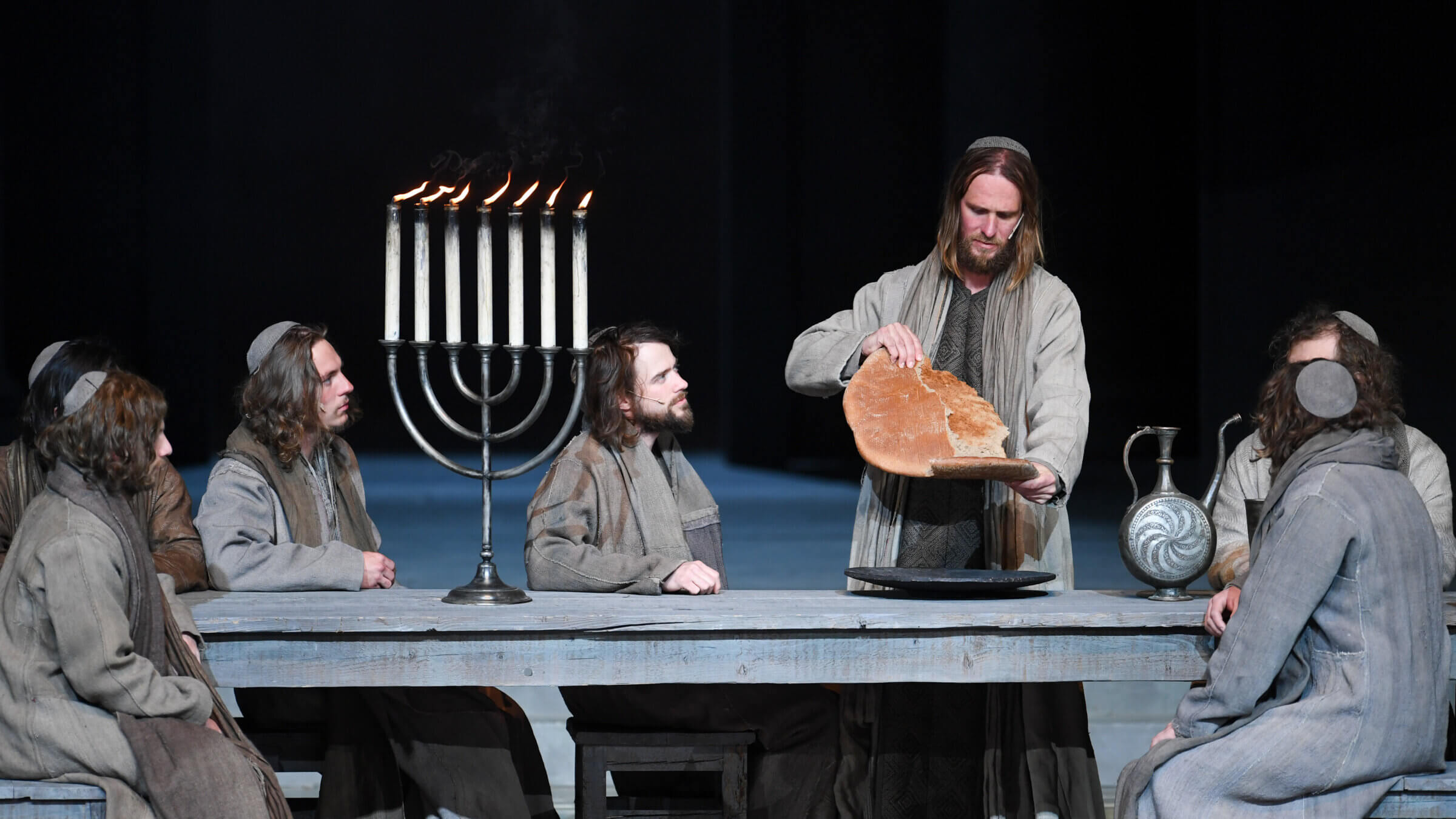
Jesus shares bread with his disciples during the Last Supper at the dress rehearsal for the Oberammergau Passion Play. Photo by Getty Images
Hineni.
That was the first word I spoke to myself as I stood in the former gas chamber at Dachau. Hineni: Here I am.

I am a Jewish American woman; I am a student studying religion because I love exploring questions of community, belief and connection; I am someone whose interest in Holocaust studies began when I was little with “The Diary of a Young Girl” and expanded as I studied Holocaust music and testimony and then spent a summer working at a Holocaust museum.
At the beginning of that summer, I woke up from nightmares about hiding from Nazis behind fake walls. By the end, I pondered whether spending my days studying and writing about Holocaust history would desensitize me. I did not have an answer to that question until I visited a concentration camp for the first time.
Early in the morning on the day I visited Dachau, I got off a plane in Munich and met up with about a dozen other young Jews. Passionate about Jewish leadership and advocacy, we had all spent the summer as American Jewish Committee Goldman Fellows. We were concluding our experience by exploring contemporary Germany and Judaism in Germany in partnership with Germany Close Up, a program for North American Jewish students and young professionals.
At Dachau, we walked down a wide path between two symmetrical lines of trees surrounded by gravel rectangles where barracks once stood. When we reached the Jewish memorial — a ramp descending into a stone cylindrical room with a circle of light at the top — we sang Psalm 23, Adonai Roi, and chanted the memorial prayer, El Malei Rachamim. A crowd gathered; onlookers took pictures of us.
“People don’t usually pray here,” our tour guide explained. I felt uneasy that others saw our remembrance as a spectacle, a curiosity.

As we prayed, I started to cry. My tears did not cease as we walked the short distance to Dachau’s gas chamber. Having written, read, watched and researched so much about the Holocaust, I thought that entering the site might feel more like walking through a museum or replica, that perhaps I’d be able to create distance between myself and the history that had occurred there.
But it felt real.
I was standing in a gas chamber, I was standing in the spot where so many people – and so many Jews — had been murdered. Any emotional detachment I may have been able to maintain when studying the Holocaust before was gone. “Hineni,” I whispered to myself, breathing in reality and choking back tears. “Here I am.”
“Shema Yisrael Adonai Eloheinu Adonai Echad.” Those were the next words I spoke to myself.
Standing in a place so closely associated with the destruction of people, both Jewish and not, these were the words that came to me. These words that I recite every night before I sleep — these central words to the Jewish religion that declare “Hear O’ Israel, the Lord is our God, the Lord is One” — felt different in Dachau. They were my assertion that I was standing there, Jewish, and not about to die. They were my way of saying “we are still here.”
A Passion Play in Oberammergau
Two days later, we traveled to Oberammergau, a small Bavarian village with a big reputation. About once a decade since 1634, Oberammergau has performed a Passion Play, a spectacle telling the story of the last days of Jesus’ life. Legend holds that the play started because of a plague and a vow. Faced with a deadly outbreak of the Black Death, in 1633, the citizens of Oberammergau pledged to put on a Passion Play every 10 years if no other lives were taken by the disease. Today, the Oberammergau Passion Play is globally famous and people make pilgrimages from around the world to see it. Each night of the play’s five-month run attracts over 4,000 visitors —a number not much smaller than the population of Oberammergau.
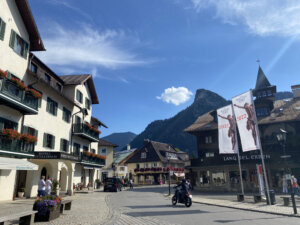
The Passion Play had a reputation for being very antisemitic, portraying Jews as responsible for killing Jesus. With the help of Jewish leaders from organizations like AJC, the production has gradually become less and less antisemitic. The 2022 Passion Play (which, ironically, considering its origins, was delayed from 2020 by COVID-19) is the first to be nearly void of antisemitism. For his tremendous work on revising the Passion Play hand in hand with Jewish leaders, AJC chose to honor director Christian Stückl. The evening we arrived in Oberammergau, we presented him with an award.
The formal ceremony and dinner, whose attendees included the mayor of Oberammergau and the Passion Play’s lead actors — all natives of the village — slowly turned into joyous ruckus. After the meal, the cast pulled out musical instruments and started singing traditional Bavarian songs. The words in Bavarian dialect meant nothing to our group, but we caught onto the tunes and joined in. In return, we sang the traditional Hebrew song “Gesher Tzar Meod” (“Narrow Bridge”) and I taught the hand motions and words to one of my favorite Jewish songs to Jesus and his apostles.
“Kol ha’olam kulo gesher tzar me’od, veha’ikar lo lefached klal.” The whole entire world is a very narrow bridge. And the main thing to recall is to have no fear at all.
I contemplated these words as I sang them. I was staying in a German village where, less than a century earlier, many of its residents had been members of the Nazi party; Hitler had visited for the 1930 and 1934 productions of the Passion Play. Just days before, I’d stood inside of a former gas chamber, and the day after that, while exploring Munich, I’d laid eyes on the spot where Kristallnacht began.
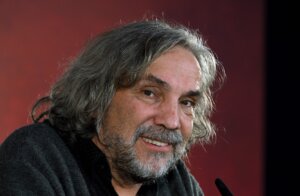
As the words to “Gesher Tzar Meod” instructed, I tried not to be afraid, but still, there were little things. Things like boarding a train in a German station; things like seeing a tarp displaying old, single shoes at a flea market, which reminded me of the piles of shoes taken from concentration camp prisoners. These things caused me moments of anxiety, moments in which I had to pause and remind myself what year I was in. Yet, I was a Jew sitting across from lederhosen-sporting Germans playing Jesus and his apostles in a teeny Bavarian village’s Passion Play. I was teaching them a Jewish song, and they were loving it. We were creating — we were being — the gesher, the bridge.
The most significant improvement Stückl made to the Passion Play was emphasizing the Jewishness of Jesus and his apostles. Although historically inaccurate, they wore head coverings resembling kippot; they recited kiddush and hamotzi. And, most strikingly, in the middle of the first of the two two-and-a-half-hour sections of the play, they sang an original composition – first performed in the 2010 Passion Play — of the same words I’d recited in Dachau: the Shema. The actors pronounced the Hebrew perfectly. If I’d closed my eyes I could have been at a Yom Kippur service instead of a Christian pilgrimage site. Yet, it was disorienting hearing the prayer sung so loudly and intensely in a Passion Play, in a context that felt very far from Judaism as I know it.
The words of the Shema — they were whispered in Dachau; belted in Oberammergau; muttered by a Jewish American processing a devastating history of her people. They were shouted by Bavarian amateur actors reckoning with performing a play that has historically perpetuated antisemitism in the country where the Holocaust began.
A prayer in Berlin
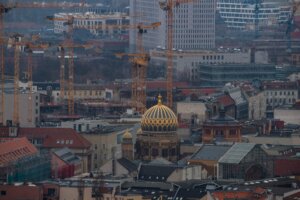
We left Oberammergau the morning after the play and traveled to Berlin, arriving in time for Shabbat. That evening, I went to Kabbalat Shabbat services at the Neue Synagoge on Oranienburger Straße in Berlin. The synagogue, which had been Germany’s most prestigious in the late 19th and early 20th century, was mostly destroyed during World War II. We davened behind the building in a vacant gravel courtyard where the sanctuary used to stand. Almost note for note, the community sang Kabbalat Shabbat using the same melodies I knew. The rabbi and I exchanged glances as we prayed; we silently acknowledged Jewish global connectivity. I’d never felt closer to home while being so far away.
I did not know what the week’s Torah portion was when I showed up to services the following morning. But as a woman from the congregation began to chant the sixth aliyah of Parashat Va’etchanan, I realized she was reading the Shema from its original place in the Torah. I looked around the courtyard, thinking about what it would have been like before the Holocaust, what it would have been now had Hitler never risen to power. I focused my attention on the woman’s chanting, which brought me back to the source. The source of my quiet prayer in Dachau and the source of the Passion Play’s loud proclamation that there was no place for antisemitism any more.
Hineni, I thought to myself. Here I am.











